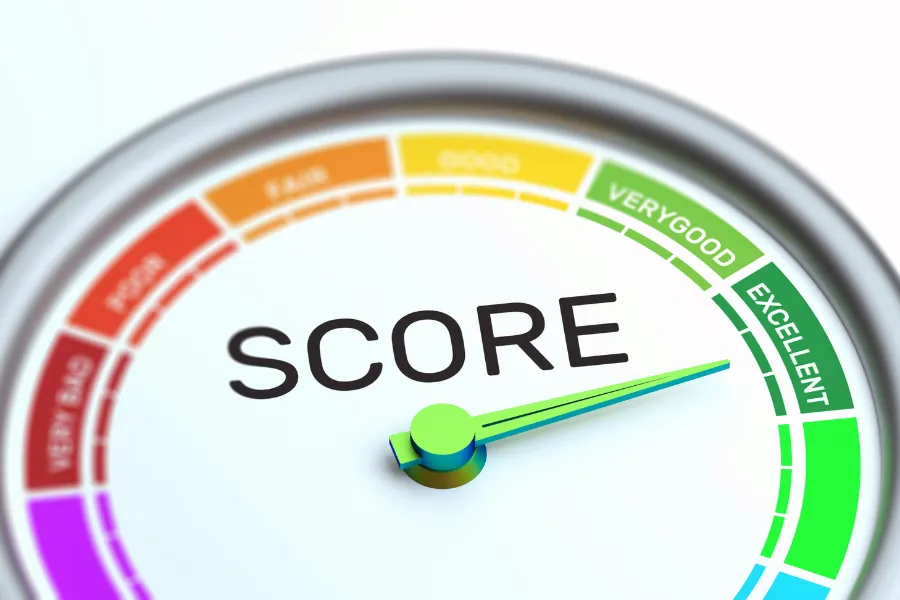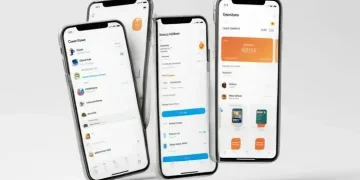Rapid Credit Score Improvement Strategies Past 750.

The Power of an Excellent Credit Score: Beyond Loan Approval
In the American financial system, a high credit score is more than just a metric—it is a financial asset. Achieving a score of 750 or higher (often considered the “Excellent” range) unlocks the absolute best interest rates on mortgages, auto loans, and personal loans, potentially saving you thousands of dollars over a lifetime.
However, moving from a “Good” score (around 700) to an “Excellent” score (750+) requires precision and strategic financial discipline. It’s about optimizing the variables that the FICO model uses to assess your reliability.
This comprehensive guide details eight essential, actionable strategies designed to rapidly boost your credit score past the 750 mark. We will focus on the specific behaviors and corrections necessary to impress lenders and secure premier financial products.
📊 Understanding the FICO Score Breakdown
To improve your score, you must first understand the weight each factor carries in the standard FICO scoring model:
| FICO Factor | Weight (Approx.) | Actionable Focus |
| Payment History | 35% | Pay every bill on time, every month. |
| Amounts Owed (Utilization) | 30% | Keep credit usage low relative to your limits. |
| Length of Credit History | 15% | Maintain old accounts; avoid unnecessary closures. |
| New Credit | 10% | Apply for new credit only when necessary and planned. |
| Credit Mix | 10% | Successfully manage different types of credit (revolving and installment). |
🚀 The 8 Strategies for Rapid Score Acceleration
Strategy 1: Attack Your Credit Utilization Ratio (CUR)
The most impactful short-term strategy is lowering your Credit Utilization Ratio (CUR). This ratio is your total credit card balances divided by your total credit limits. Lenders want to see you use less than 30% of your available credit, but the magic number for an excellent score is below 10%.
- Action: Pay down your revolving debt (credit cards) right now. If you can’t pay it off completely, aim to pay down the balance before the statement closing date, which is the day the creditor reports the balance to the credit bureaus.
Strategy 2: Become an Authorized User Strategically
If you have a trusted family member (e.g., a parent or spouse) with a long history of excellent credit and low utilization, ask them to add you as an Authorized User (AU) on one of their oldest, best-maintained credit cards.
- Action: Ensure the primary cardholder’s usage history (low balances, on-time payments) is reported to the credit bureaus under your name. Note: You don’t need to use the card; you just need the benefit of their history.
Strategy 3: Dispute Every Error on Your Credit Report
Payment history makes up 35% of your score. Even one erroneous late payment can severely damage your credit.
- Action: Obtain free copies of your credit reports from all three major bureaus (Equifax, Experian, TransUnion) and meticulously check for errors: incorrect balances, identity theft, or misreported late payments. Dispute any inaccuracy in writing immediately.
Strategy 4: The Credit-Limit Increase Play
By increasing your credit limits while keeping your balances the same, you instantly lower your Credit Utilization Ratio (CUR) without paying down debt.
- Action: Ask your current creditors for a credit limit increase. Important: Only do this if you are absolutely sure you will not be tempted to spend up to the new, higher limit. Ensure the request is a “soft inquiry” (no negative score impact).
Strategy 5: Avoid New Hard Inquiries (The 10% Factor)
Every time you apply for a new loan or credit card, the lender performs a “hard inquiry,” which can temporarily drop your score by a few points.
- Action: During your credit score improvement period, limit applications for new credit to only what is absolutely necessary (e.g., a mortgage refinance). Plan any major applications (car loan, new card) within a short window (14–45 days) so the credit bureaus count them as a single inquiry.
Strategy 6: Maintain Old, Paid-Off Accounts
Your length of credit history (15% of your score) is calculated by the average age of all your open accounts.
- Action: Do not close your oldest credit cards, even if they are paid off. Closing an old account reduces your total available credit (harming CUR) and shortens the average age of your accounts. Use the old card for a small, recurring charge (like a streaming service) and pay it off monthly to keep it active.
Strategy 7: Leverage Installment Debt Payments
Successfully managing installment debt (like mortgages or auto loans) improves the “Credit Mix” factor.
- Action: If you are repaying a fixed installment loan, consistently making on-time payments shows reliability. If you can afford it, making an extra payment toward the principal each year can slightly accelerate your payoff and optimize your debt management profile.
Strategy 8: The Secured Card and Conversion Path
If you are recovering from past financial difficulties and your score is below 700, a secured credit card is an excellent starting point.
- Action: Open a secured card (backed by a cash deposit). After 6 to 12 months of perfect usage, many banks will “graduate” the secured card into a standard, unsecured card and return your deposit, giving you the benefit of an older account for future scoring.
🎯 Conclusion: Discipline Drives Excellence
Moving your credit score past 750 is a marathon of strategic choices, not a sprint. The two most critical factors—payment history and utilization—account for 65% of your score. Prioritizing low debt, timely payments, and correcting any errors are the fastest paths to financial excellence.
An excellent score guarantees access to the financial products that build long-term wealth. Don’t settle for “good”; aim for “prime” status and unlock the full potential of your borrowing power.






